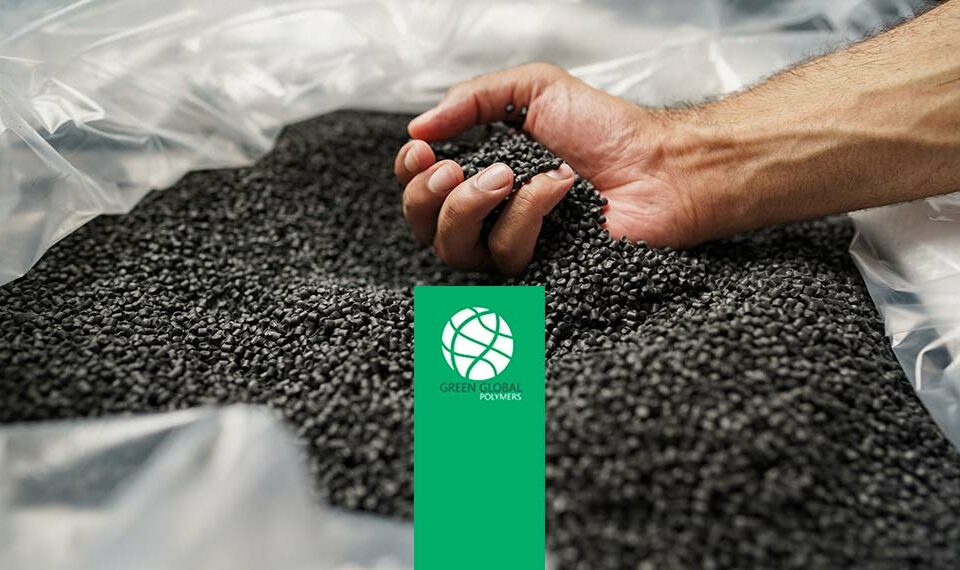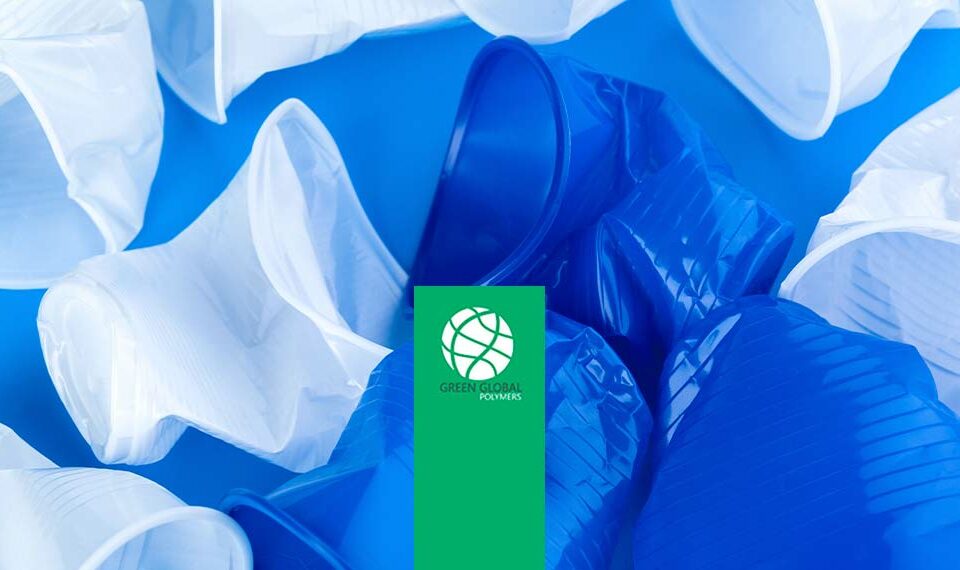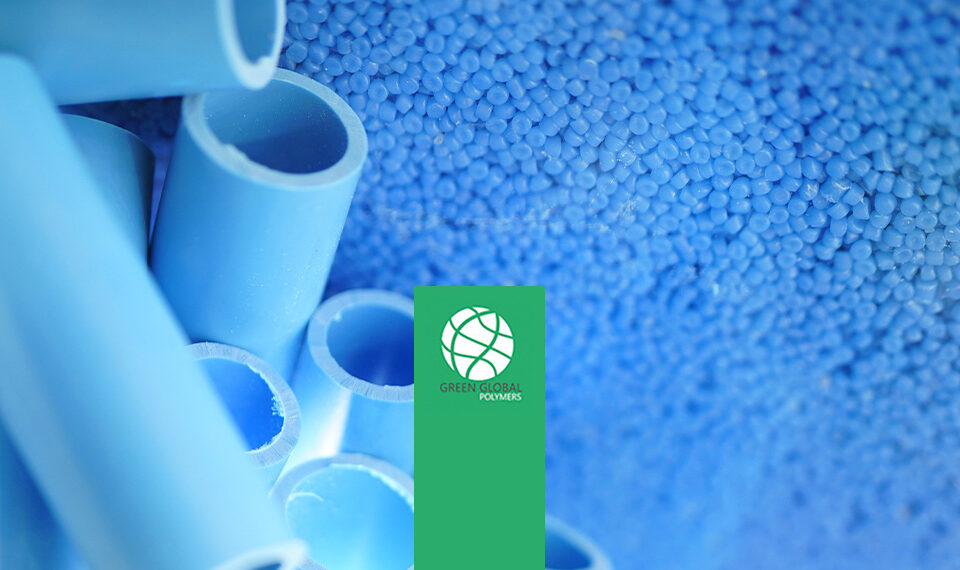¿El plástico PVC es reciclable?

El Policloruro de vinilo (PVC) es uno de los plásticos más versátiles y ampliamente utilizados en la industria. Sin embargo, la pregunta de si es reciclable ha sido un tema recurrente tanto para los consumidores como para las empresas comprometidas con la sostenibilidad. La respuesta es clara: sí, el plástico PVC es reciclable.
A diferencia de otros polímeros, el PVC presenta propiedades únicas como su resistencia a la abrasión, al agua y a la corrosión, lo que lo hace ideal para múltiples aplicaciones. No obstante, estas mismas características también implican desafíos específicos en su reciclaje. En Green Global Polymers, con más de 30 años de experiencia, hemos perfeccionado métodos para dar nueva vida al PVC, asegurándonos de que sea un material no solo reutilizable, sino también una pieza clave en la transición hacia una economía circular.
¿Cómo se recicla el plástico PVC?
El proceso de reciclaje del PVC comienza con la correcta recolección y separación del material. En Green Global Polymers, el PVC que llega a nuestra planta en Ribarroja se somete a un riguroso sistema de lavado y triturado, eliminando impurezas y obteniendo un plástico de alta calidad listo para su reutilización.
El reciclaje del PVC puede clasificarse en dos categorías principales:
- Reciclaje mecánico: Aquí, el PVC se tritura y se transforma en gránulos o granzas. Este material reciclado conserva gran parte de sus propiedades físicas, lo que lo hace ideal para fabricar nuevos productos.
- Reciclaje químico: Aunque menos común, este proceso descompone el PVC en sus componentes químicos originales, permitiendo su reutilización en aplicaciones más especializadas.
Entre los desafíos más importantes está la separación de aditivos y contaminantes, pero en nuestra experiencia, un manejo adecuado asegura un reciclado eficiente. Esto permite que el PVC reciclado mantenga sus estándares de calidad y versatilidad.
Beneficios del reciclaje de PVC
El reciclaje del PVC no solo reduce la cantidad de plástico que termina en vertederos, sino que también presenta una solución efectiva frente a problemas ambientales como la contaminación. Algunos de los beneficios más destacados incluyen:
- Reducción del consumo de recursos naturales: Al reciclar PVC, disminuye la dependencia del petróleo y gas natural, materias primas esenciales en su fabricación original.
- Ahorro energético: Los procesos de reciclaje requieren menos energía que la producción de PVC nuevo, contribuyendo así a una menor huella de carbono.
- Impulso a la economía circular: En Green Global Polymers, nuestras granzas recicladas son utilizadas para fabricar productos nuevos, desde tuberías hasta envases, cerrando el ciclo de vida del material.
- Sostenibilidad empresarial: Las empresas que apuestan por materiales reciclados no solo ahorran costos, sino que también mejoran su reputación ambiental, algo crucial en el mercado actual.
Estos beneficios no serían posibles sin un sistema de reciclaje eficiente, un compromiso que hemos asumido desde nuestra fundación.
El rol de Green Global Polymers en el reciclaje del PVC
Como líderes en la recuperación y comercialización de plásticos, en Green Global Polymers hemos implementado procesos innovadores para el reciclaje del PVC. Nuestra planta cuenta con tecnología avanzada para garantizar que el plástico reciclado cumpla con los estándares de calidad más exigentes.
Durante las últimas tres décadas, hemos trabajado de la mano con industrias de edificación, envases y productos médicos, transformando el PVC en recursos útiles que regresan al mercado como productos nuevos. Esta experiencia nos ha permitido posicionarnos como un referente en el sector.
Nuestra filosofía no se limita a reciclar; buscamos educar y sensibilizar a nuestros clientes sobre la importancia de cerrar el ciclo de vida del plástico, demostrando que un material tan resistente puede tener infinitas oportunidades de reutilización.
Aplicaciones del PVC reciclado en la industria moderna
El PVC reciclado tiene un sinfín de aplicaciones en diversas industrias. Gracias a su versatilidad, puede ser transformado en:
- Materiales de construcción: Tuberías, perfiles de ventanas y revestimientos.
- Cables eléctricos: La resistencia a la abrasión y propiedades aislantes del PVC lo hacen indispensable para aplicaciones en infraestructura eléctrica.
- Envases y embalajes: Desde botellas hasta blísters, el PVC reciclado puede cumplir con los estándares de higiene y durabilidad necesarios.
- Productos médicos: La industria de la salud también se beneficia del reciclaje de PVC, en productos como bolsas intravenosas y mascarillas.
En nuestra planta, el PVC recuperado es cuidadosamente procesado para garantizar que pueda ser utilizado nuevamente en aplicaciones críticas, sin comprometer calidad o seguridad.
El impacto ambiental del reciclaje del PVC
El reciclaje del PVC juega un papel fundamental en la lucha contra la contaminación plástica. Cada tonelada de PVC reciclado evita que miles de kilogramos de desechos terminen en vertederos o cuerpos de agua.
Además, el reciclaje contribuye a reducir las emisiones de gases de efecto invernadero. Producir plástico reciclado consume menos energía que fabricar plástico virgen, lo que significa menos CO₂ liberado a la atmósfera. En Green Global Polymers, hemos logrado implementar un modelo sostenible que no solo reduce el impacto ambiental, sino que también fomenta el uso responsable de recursos.
Mitos y verdades sobre el reciclaje del plástico PVC
A lo largo de nuestra trayectoria, hemos identificado muchos mitos sobre el reciclaje del PVC:
- Mito: “El PVC no se puede reciclar”.
Verdad: El PVC es totalmente reciclable si se manejan adecuadamente los procesos técnicos. - Mito: “El PVC reciclado no es tan bueno como el nuevo”.
Verdad: En Green Global Polymers, garantizamos que nuestras granzas recicladas cumplen con altos estándares de calidad, haciéndolas comparables al plástico virgen.
Romper estos mitos es esencial para incrementar la participación de consumidores y empresas en iniciativas de reciclaje.
Cómo contribuir al reciclaje del PVC
El éxito del reciclaje comienza con la participación activa de todos. Algunas recomendaciones clave incluyen:
- Para empresas:
- Colaborar con proveedores especializados en reciclaje como Green Global Polymers.
- Diseñar productos que faciliten su posterior reciclaje.
- Apostar por materiales reciclados en su producción.
- Para consumidores:
- Separar correctamente los desechos en casa.
- Informarse sobre puntos de reciclaje para PVC en su localidad.
- Elegir productos que incluyan plástico reciclado en su fabricación.
Cuando todos trabajamos juntos, el reciclaje del PVC se convierte en una herramienta poderosa para combatir la contaminación y construir un futuro más sostenible.
El plástico PVC es reciclable y promueve la economía circular
El reciclaje del PVC es una solución efectiva para abordar la contaminación plástica y promover una economía circular. En Green Global Polymers, hemos demostrado que con procesos eficientes y compromiso, es posible dar nueva vida a este material, generando beneficios tanto ambientales como económicos.
Invitamos a empresas y consumidores a unirse a este esfuerzo, porque juntos podemos construir un mundo más sostenible. ¡El plástico PVC no es solo reciclable, es una oportunidad para transformar el futuro!
Si quieres saber cómo adquirir este producto o necesitas más información sólo tienes que contactar con GREEN GLOBAL POLYMERS.



